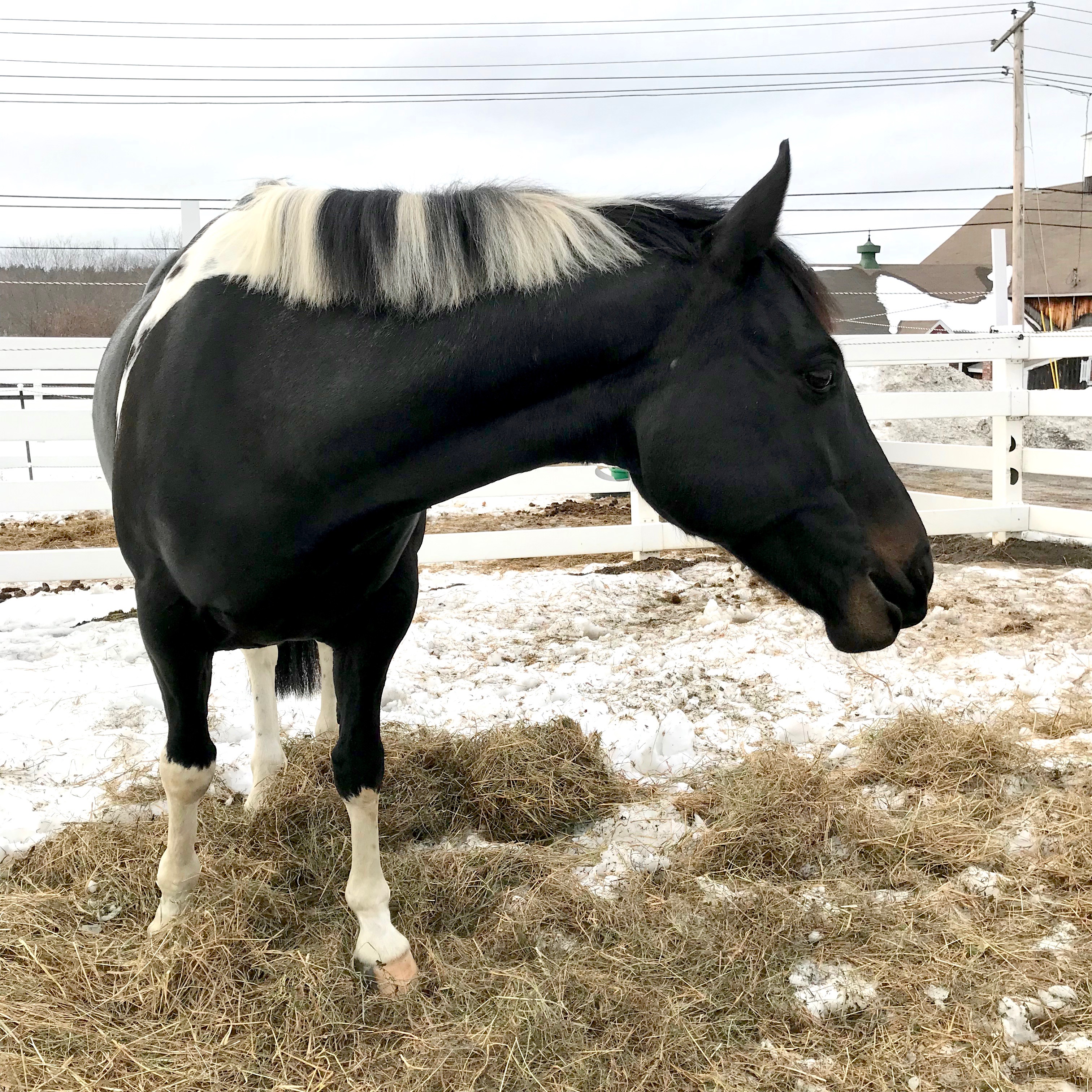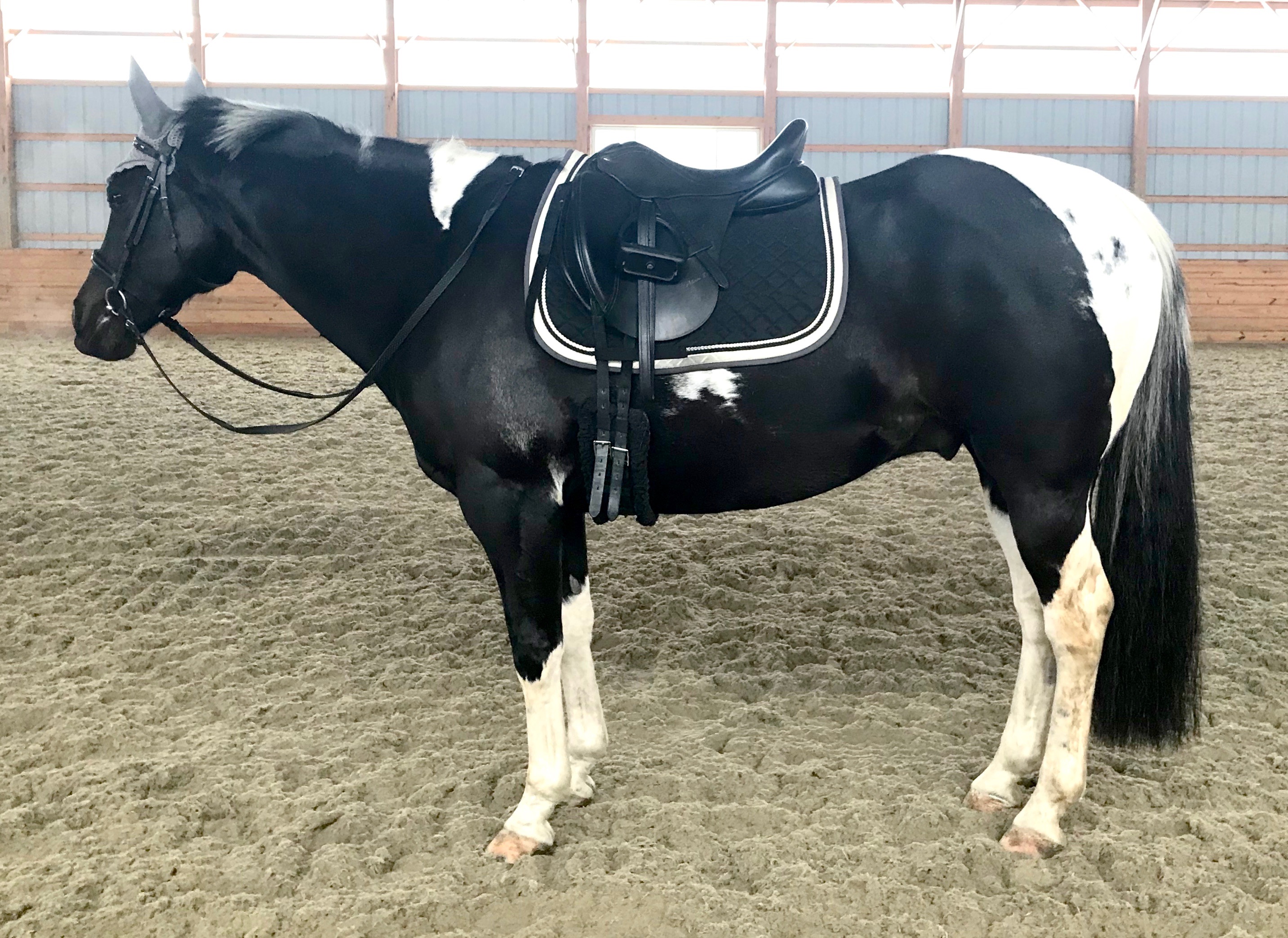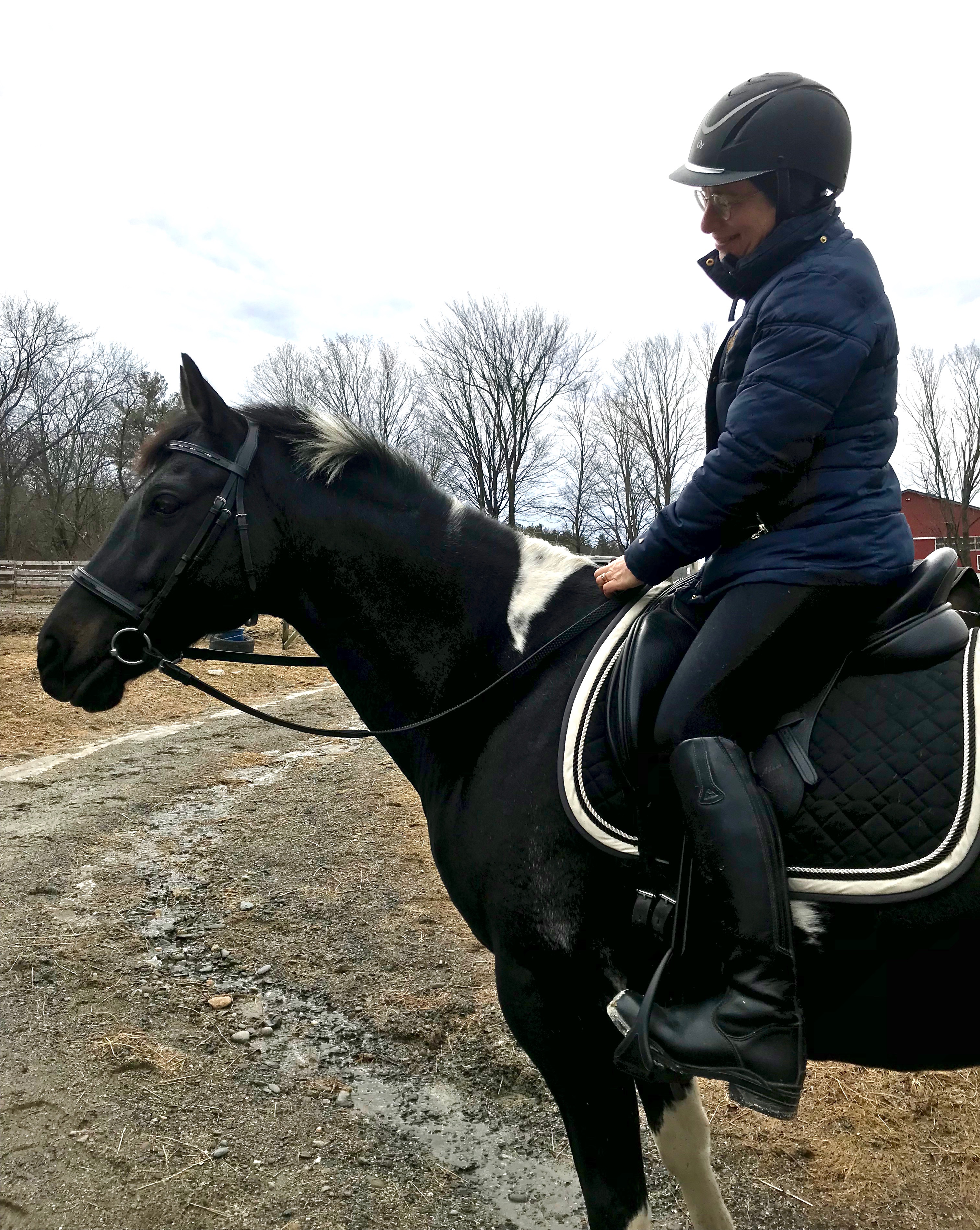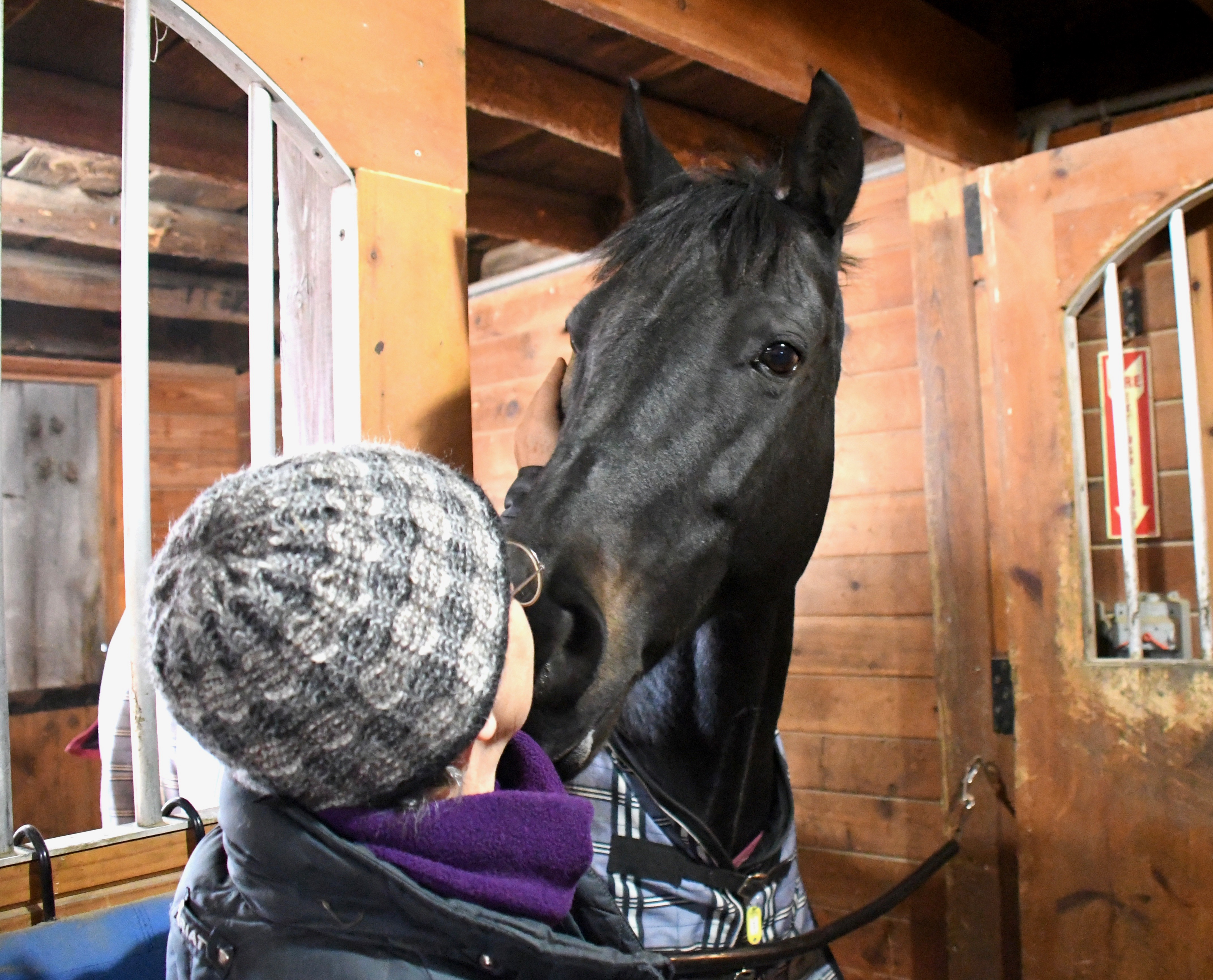Recently, the buzzwords in animal training and welfare are choice and autonomy. The thinking is that the more animals have control over their own lives, the healthier they’ll be emotionally and physically. Certainly, giving the animal an environment in which they can choose their level of comfort – shady or sunny? hidden away or exposed? eating now or caching? – contributes to mental and physical well-being.
If an animal chooses to engage in an activity with a human, instead of struggling against it, that also improves an animal’s life. That’s where training comes in. You can train an elephant to offer it’s foot for a pedicure. You can train a dog that the scale at the vet’s office is a fun place to be. (Or your goats. See this post about Pip and Caper at the vet’s office when they were younger!)
But sometimes, even if you’re training with yummy reinforcers, the animal isn’t interested in the choice. This applies to children, too. My son would have chosen to go to preschool with no pants on. In winter. I did not let that happen. He went to school. Dressed. You’re told that if you give your child a choice – blue pants or red? – that they won’t notice that they’re not getting to make the decision about wearing the pants at all. I found that this wasn’t true. My son knew that picking out which pants to wear was not the same as choosing pants or no pants. But the strategy worked because he figured that he might as well take the choice offered than have no choice at all.
Many things prevent us from giving our horses autonomy. Schedules, limitations of the environment, and safety, all get in the way of offering pure choice. For example, I try to time my arrival at the barn after mealtime, but it’s not always possible. Also, mealtimes can last an hour or more!

When I find Tonka like this, hoof-deep in hay, he would prefer that I’d come back later, after he’s eaten every last bit. I can’t do that. I have ways to handle him so that he willingly leaves his paddock, but I know, and he knows, that the most basic of choices, whether to engage with me or not, is not something that he has.
That’s okay. Like with my son wearing pants, I have Tonka’s best interest in mind. It helps that for both Tonka and my son, I acknowledge their frustration.
Because I let Tonka express what he thinks – to a point – I was able to ask him, when shopping for a saddle, which one he liked. If he did whatever I told him to do without comment, then I’d never have known his preference. But, Tonka felt safe to tell me what he thought of one saddle by moving away from the mounting block and not letting me on. With another saddle, he let me on, took four steps and then refused to budge. So, when I put on the saddle that he did like, I knew it because we had a full ride in it without complaint. A professional fitter agreed with Tonka’s decision.

That doesn’t mean that all balking is acceptable. Tonka can be stiff and slow when I get on. He’d prefer that I just get off rather than work through it. I have thumped him with my legs to get him going. He doesn’t have any choice in the matter. But, then I pay attention, and let him ease into the work. We have a dialog about the pace, the sweep of the turns, the amount of bend in his neck. He knows I’m listening because I adjust what I ask for by what he tells me.
Last week, after a scarily icy month, everything melted and it stayed above freezing for an afternoon. We were able to ride outside!

The field was too wet, but the the footing was okay on the sandy path between the paddocks.

Tonka was not given the choice to stretch down and go slow. (I’ve written about his injured neck and how he has to carry himself here.) I put him into a dressage frame and we walked around and around. I created as much variety as I could. We changed directions. We did ziggy lines. After traveling a mile, I thought we’d go into the arena to do some trotting. As I headed Tonka towards the indoor, he put the brakes on.
Was this disobedience? Not yet. If I had insisted that Tonka walk in, and he refused, perhaps I’d use that label. But at this moment, Tonka was communicating his opinion, and that was that we should stay outside. He was right. It was a good choice. So we walked another mile and called it a day.
Some might say that this taught Tonka that he can balk and get his way, but I don’t think so. Animals are capable of understanding the nuances of conversations and of making compromises. My son learned that he had to wear pants to school. I agreed with him what a bummer that was, but that some things were not open to debate. Besides, it never failed that when he got to school, fully dressed, that he had a great time – he did learn that wearing pants was part of that good experience. When Tonka balks we stop. I look where he’s looking. Yes, I say, it’s a bummer that you have to workout, but there’s no choice. I squeeze my legs and he goes. I try to make that a good decision for him and make the riding workout feel good. Still, I know that going around the arena isn’t half as fun as preschool was for my son. If we have the choice to ride outside and do something different, we should. I was glad that Tonka reminded me of that. Two days later, we walked around the paddocks and then when I headed to the arena, Tonka walked right in. I think he understood that the paddocks get boring and that he could trot indoors. But, who knows? I can only infer so much from his behavior. What I do know was that he willingly went where I asked him to.
Tonka and I are in agreement about one thing. We have conversations about it all the time. We can’t wait for spring.



I love your ‘conversations,’ and the way you write about them. They speak to me a bit more practically than Anna Blake’s blog, although I dearly love reading what she has to say, too.
What a nice compliment! Anna’s blog is excellent. We think in similar terms. My blog tends to have more real life stories, and hers is more philosophical. I’d love to get more readers, so please share my blog via whatever social media you use. It makes a difference to me! Thanks!
I love the way you two communicate. It makes for such a happy relationship.
Most of the time it’s happy 🙂 There is, of course, conflict, but we have ways to work it out that satisfies both of us.
I love your philosophy Terry! I totally agree on the importance of mixing things up, and giving the beasts a choice sometimes. It’s almost as if a free choice is a reward for being cooperative during training, whether it’s under saddle or in a dog’s case on leash. Have you read the book “Merle’s Door”? It’s a novel about a man who lets his dog make all the choices for himself. It’s an interesting read, although I certainly didn’t agree with taking that approach.
I haven’t read that book, but have heard of it. Choice can reduce stress and anxiety and improve relationships. But it’s not always possible to offer, or to offer right away. Life is complex, isn’t it?